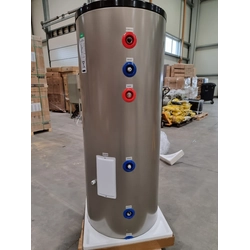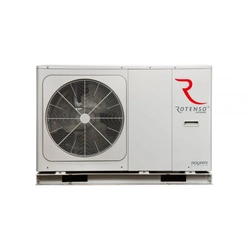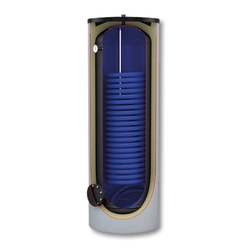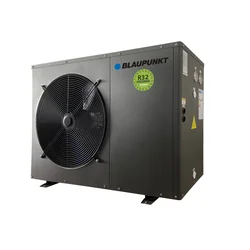Heat pump without photovoltaics - is it worth it?
How does a heat pump work?
To help the customer better understand the profitability of combining a heat pump with photovoltaics, it is worth presenting the process of how these devices work. A heat pump is a heating system that, unlike traditional systems, does not generate its own energy. It does not need to burn fuel (e.g., coal or pellets) to heat a room. The energy that allows it to operate is drawn from water, earth, or air. The pump uses outside air, which, thanks to the refrigerant and proper compression, generates usable heat. This can be used to heat the building and domestic hot water.
The same mechanism used in the operation of refrigerators is utilized in the operation of heat pumps – such a comparison will help the customer better understand how the device works. The main components of a heat pump include:
• compressor,
• condenser,
• expansion valve,
• evaporator.
For its operation, a heat pump also needs a refrigerant. It is a liquid that circulates inside the system, and by boiling under low pressure, it absorbs heat from outside the building. Then the temperature and pressure in the system increase, and thanks to the compressor, the liquid turns into a gas. It then goes to the condenser, where it releases heat to the installation. Subsequently, the liquid refrigerant passes through the expansion valve. There, the pressure and temperature drop, and the cycle starts again.
However, electricity is needed for the heat pump to work. Without it, energy cannot be transported from the earth, air, or water. Customers interested in purchasing may be concerned that a heat pump will not be cost-effective without connecting it to photovoltaic panels. It is worth dispelling their doubts and explaining the entire process in detail.
BLAUPUNKT heat pump 15kW BLP15P3V3MR32

AOKOL ASH-35CHW/MR 10 kW Monoblock Type Air to Water Heat Pump
Blaupunkt heat pump, Monoblock BLP12P3V2MR32 12kW

Sevra heat pump 8kW monobloc SEV-HPM01-08, Mitsubishi components
Photovoltaics supporting the heat pump
It allows you to become independent of traditional forms of heating and the need to supply fuel. By taking this step, the customer gives themselves a chance to estimate the average return on investment and the amount of bills. Considering the dynamic changes in gas, electricity, or coal prices, this solution is definitely the best option. However, it should be borne in mind that the simultaneous installation of a heat pump and photovoltaics is a significant expense. Although you can count on co-financing under the Clean Air program, the decision to invest is usually made after lengthy analyzes. So is the installation of a heat pump alone profitable for the customer?
Heat pump without photovoltaics - yes or no?
Although it is worth using renewable energy sources to the greatest extent possible, even a heat pump alone is a solution worth considering. Not only for ecological reasons but also financial ones. Year after year, fossil fuels become more expensive. Although a heat pump needs electricity to operate, it uses 75-80% renewable energy sources. Taking into account the possibility of receiving a subsidy for its installation, it turns out that the investment is not that expensive, and the cost of heating throughout the year will significantly decrease.
What should the customer pay attention to when choosing only a heat pump?
An additional factor that will affect the efficiency of heating is the property's size. The larger the building, the harder it is to heat. The pump will generate lower costs when working on a small area, but the device's power will be significant here. Keep this in mind when selecting a specific model with the customer. There are situations when, due to the specifics of an existing building, the installation of a heat pump is not recommended. The reason may be poor insulation of building partitions or a small heating surface. It is worth making customers aware of this. In that case, other thermo-modernization works are also necessary. However, if the building owner decides to carry them out, the heat pump will also work in old construction.
More and more entrepreneurs and private individuals are deciding to invest in ecological heating methods and use renewable energy sources. Over the years, similar steps (especially in new construction) will become common, and the financial benefits they bring will convince more undecided people. A wide range of heat pumps at attractive prices from proven suppliers can be found on merXu.












